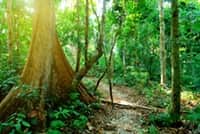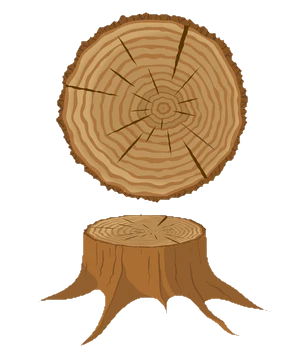Ecosystem Worksheets

Ecosystem worksheets and ecology lesson plans designed for high school, middle school, and elementary school life science teachers are downloadable here. Looking for environmental science quiz questions? What about an ecosystem stability lab? NGSS Life Science offers many great lessons for free. Click the Free Lesson Plan (PDF) link below or become a member to get access to the answer key and editable file. Free ecosystem ecology curriculum includes:
-

Ecosystem Worksheet  Free Lesson Plan (PDF)
Free Lesson Plan (PDF)
Lesson Plan (DOCX) & Answer Key with Membership
High School Worksheet
In this ecosystem worksheet, students are introduced to ecosystem stability and the factors that contribute to ecosystem stability. Students are also introduced to the different types of terrestrial ecosystems.NGSS Standard
HS-LS2-2
HS-LS2-6
MS-LS2-2 (Interactions Across Multiple Ecosystems)
MS-LS2-4 (Ecosystem Affect on Populations)
Published by NGSS Life Science
-

Environmental Science Question Bank  Free Lesson Plan (PDF)
Free Lesson Plan (PDF)
Lesson Plan (DOCX) & Answer Key with Membership
High School Test
Question bank to build assessments. An active membership is required to view questions.NGSS Standard
HS-LS2-7
HS-LS4-6
Published by NGSS Life Science
-

Ecosystem Stability Test Question Bank  Free Lesson Plan (PDF)
Free Lesson Plan (PDF)
Lesson Plan (DOCX) & Answer Key with Membership
High School Test
Question bank to build assessments. An active membership is required to view questions.NGSS Standard
HS-LS2-1
HS-LS2-2
HS-LS2-6
Published by NGSS Life Science
-

California’s Energy Initiative Free Video
High School Multimedia
California looks into developing clean energy to supply its needs. Economics, environmental science, politics, and electricity generation topics are covered.NGSS Standard
HS-LS2-7
HS-LS4-6
Published by WGBH Educational Foundation
-

Examining the Stages in Ecological Succession Free Lesson Plan
Middle School Worksheet
Students analyze how a pond changes and answer questions based upon the pictures of the pond.NGSS Standard
HS-LS2-2
HS-LS2-6
MS-LS2-4 (Ecosystem Affect on Populations)
Published by Shannan Muskopf
-

Populations & Ecosystem Stability Lab  Free Lesson Plan (PDF)
Free Lesson Plan (PDF)
Lesson Plan (DOCX) & Answer Key with Membership
High School Lab
In this population and ecosystem stability lab, students participate in an activity that models predator-prey and how resilient a population can be when limiting factors are introduced or removed. Students will model biotic and abiotic factors and how those factors affect population size. At the end of the experiment, students will make a population growth graph based on the experiment and calculate the growth rate through many generations.NGSS Standard
HS-LS2-1
HS-LS2-2
HS-LS2-6
Published by NGSS Life Science
-


Expressing Ideas for Patterns in Ecosystems Worksheet Free Student Handout
Free Multimedia
Free Student Handout
Free Lesson Plan
High School Worksheet
In this ecosystem worksheet, students ask questions about changes to matter and energy in a grassland ecosystem.NGSS Standard
HS-LS2-1
HS-LS2-6
MS-LS2-1 (Resource Availability)
Published by Carbon TIME
-

North American Biomes Worksheet Free Lesson Plan
Middle School Worksheet
Students color in the appropriate biome on a map of North America. Students then answer several questions about those biomes.NGSS Standard
MS-LS2-1 (Resource Availability)
Published by Shannan Muskopf
